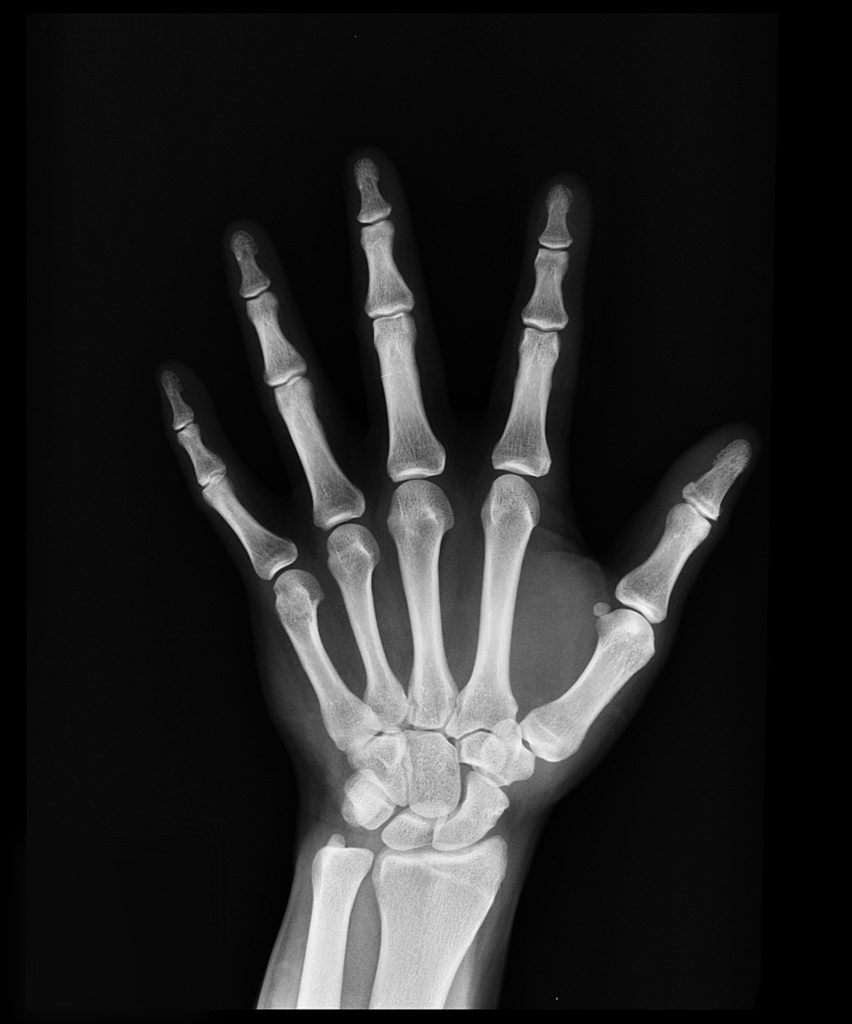Are you an avid video gamer, a hardcore texter, and a selfie-freak? Whatever league you are in, the one common thing is:
The world is at our finger (and thumb) tips, and that’s excellent.

However, not excess of everything is safe and healthy.
According to this study published in the Journal of Orthopedic Research, the overuse of hand, finger, and thumb joints causes repetitive stress injuries to the joint of the thumb. Thumb Pain is a common hand and wrist condition associated with the injury and abuse of small thumb joint, called the trapeziometacarpal (TM joint), resulting in base of thumb pain.

Are you too suffering from thumb joint pain? Hold your thumbs because you’ll soon learn about the prevailing conditions related to thumb pain and what you can do about them.
Can’t Nail It Up With Your Thumb?
Everything around us is always within our thumbs’ reach. Whether you are eating, writing, typing, or gardening, your thumbs are in continuous action. It is, therefore, understandable to suffer from on and off thumb joint pain.
However, what is not normal is the persistent thumb joint pain.
Several conditions can cause thumb joint pain. Understanding each of these will help you unleash your good-old handgrip, bringing you and your thumbs back in the game.

Are you suffering from ongoing thumb pain? Keep reading further to learn how you can give a thumbs down to your thumb joint pain and improve your quality of life!
Trigger thumb: According to this article published in the Journal of the American Academy of Physician Assistants (JAAPA), Trigger thumb is one of the most common causes of thumb joint pain in adults aged 40-60 years. It causes cramping pain at the base of the thumb joint which radiates to palm as you extend and relax your thumb.
The exact cause of the trigger thumb is still unknown, but the condition causes inflammation of fibrous tissue that connects muscle to the thumb bone.
People with trigger thumb often find their affected thumb getting ‘locked’ in a bent position.
Sesamoiditis of the thumb: Sesamoiditis refers to the inflammation of the sesamoid bones. The sesamoid bones of the thumb are found within the tendon that passes through the base of the thumb.
The main function of sesamoids is to protect the tendon by minimizing friction. Sesamoiditis commonly results from thumb arthritis and joints trauma due to fracture.
Sprained Thumb: A sprained thumb is yet another thumb condition that calls for holding your thumbs and giving them a break.
The bones in our bodies are connected to each other through the ligament. In a sprained thumb, the ulnar collateral ligament, a ligament that attaches to the middle joint of the thumb (the interphalangeal joint), gets injured.
According to the American Academy of Orthopaedic Surgeons (AAOS), the most common causes of sprained thumb is a direct injury (Skier’s thumb) and frequently indulging your thumb in grasping and twisting activities (Gamekeeper’s thumb).
MCP Joint Arthritis (Metacarpophalangeal Joint Arthritis): The joint where our thumb bone meets the palm bone is called metacarpophalangeal joint (MCP) of the thumb. It is due to this joint that you can bring your thumb in action by moving it in multiple directions by gripping and pinching.
The inflammation of the MCP joint leads to arthritis.
Basal Thumb Arthritis (Carpometacarpal Joint / Trapeziometacarpal Joint Arthritis): The carpometacarpal joint (CMC) is also known as nature’s universal joint because it allows movement in several directions.
The intense degree of mobility in this joint makes it vulnerable to degeneration.
In basal thumb arthritis, the pain originates from the base of the thumb and increases with activity. Over time, the pain worsens, giving you an indication that your thumbs need some rest!
Analyze Your Thumb Joint Pain

If you experience any of the above thumb conditions, your doctor will run down some diagnostic tests to get your thumbs back to work. The commonly used method of diagnosing thumb pain include:
- X-ray to identify possible injuries (fractures) or arthritis.
- Ultrasound
- MRI
Bring Your Thumbs Back In Action
Once diagnosed, it’s time to keep the thumbs rolling by treating them well. Minor injuries often resolve on their own by adequate rest and symptomatic management.

Medications: They help in calming down your thumbs by alleviating pain and slowing down the progress of arthritis. Your doctor might prescribe you analgesics for pain relief, and anti-inflammatory and steroid medications to fight arthritis.
Night Splinting: It gives your painful thumb a rest by limiting its movement.
Hand Therapy: These are a bunch of simple exercises you can do at home to reduce pain and discomfort. However, hand therapy is only recommended in the early stages of thumb joint arthritis and by the recommendation of a physical therapist.
Surgery: If your thumb pain has become as stubborn as you are, then surgical intervention might be required.
However, surgery is only recommended in late-stage thumb arthritis that shows no improvement with conservative treatment.
The Rule of Thumb – Key Takeaways
Thumbs rule everywhere. Our day to day tasks rely on these thumbs. Whether you are gaming, typing, or taking a selfie, you need to tap in with those thumbs. From eating to reading, driving to cycling, and even pinching someone, you need to have pain-free thumbs.
Our daily activities constantly expose our thumbs to stress. If you experience mild to moderate thumb joint pain, it’s wise to give them a break every once in a while.
Are you experiencing thumb joint pain, that is similar to any of the conditions mentioned above? Consult our hand care team at +65 6733 9093 or reach out to us.
Was this article useful? Thumb Up and share it with your family and friends!